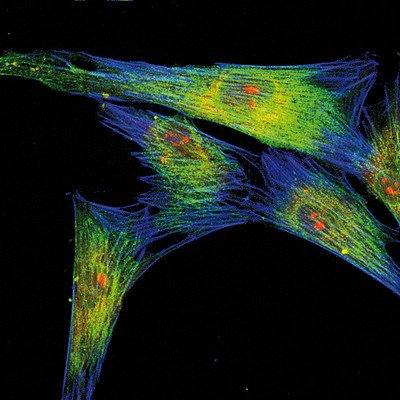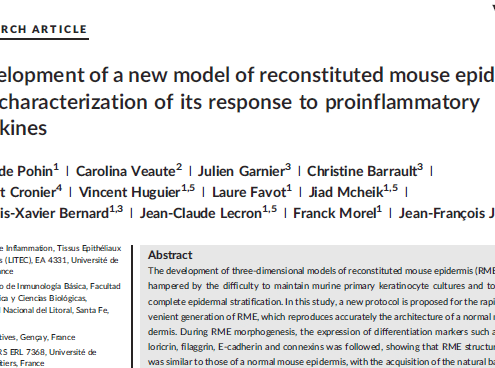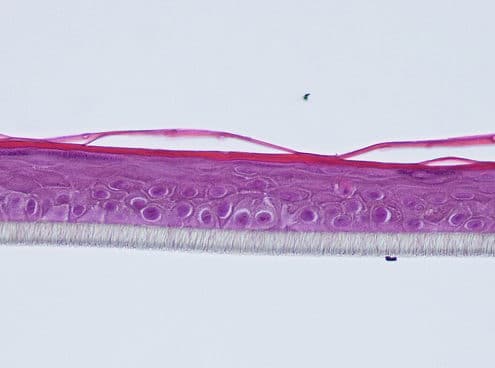
Normal Human Dermal Fibroblasts (NHDF) in In Vitro Research
Cell and tissue engineeringWhat are the applications of Normal Human Dermal Fibroblasts and how are they used in various studies? Learn about NHDF and its applications in this overview.

Development of a new model of reconstituted mouse epidermis and characterization of its response to proinflammatory cytokines
Cell and tissue engineeringThe development of three-dimensional models of reconstituted mouse epidermis (RME) has been hampered by the difficulty to maintain murine primary keratinocyte cultures and to achieve a complete epidermal stratification. In this study, a new protocol is proposed for the rapid and convenient generation of RME,

Development of a new model of reconstructed aged skin useful to study antiageing effects of cosmetic compounds
Cell and tissue engineering, Skin ageingThe development of new anti-ageing products needs performant in vitro models mimicking morphological changes and physiological modifications appearing during skin ageing. In order to have access to a simple model mimicking the epidermis ageing but in relation with a normal dermis, we have developed a new in vitro model of reconstructed skin comprising an aged epidermis covering a reconstructed dermis built with collagen and normal (young) fibroblasts.

Androgens induce sebaceous differentiation in sebocyte cells expressing a stable functional androgen receptor
Cell and tissue engineering, Dermatology_cat_publiIn order to study the impact of active androgens in sebocytes, we constructed a stable human sebocyte cell line derived from SEBO662 [17] constitutively expressing a fully functional AR. In these SEBO662 AR+ cells, dihydrotestosterone (DHT) induced AR nuclear translocation and the strong modulation of a set of transcripts (RASD1, GREB1...) known to be androgen-sensitive in other androgenic cells and tissues.

Human embryonic stem-cell derivatives for full reconstruction of the pluristratified epidermis: a preclinical study
Cell and tissue engineering, Dermatology, Pharmacology, Wound healingTo assess whether the keratinocyte progeny of human embryonic stem cells (hESCs) could be used to form a temporary skin substitute for use in patients awaiting autologous grafts, we investigated the cells' capability of constructing a pluristratified epidermis.


